- Expert advice/
- Invites & paper/
- Invitations/
- The Best Ways to Collect Wedding RSVPs
- Invitations
The Best Ways to Collect Wedding RSVPs
There are a few ways to collect your wedding RSVPs. Here, we'll tell you how to do it right, plus other wedding RSVP etiquette.
Last updated February 5, 2024
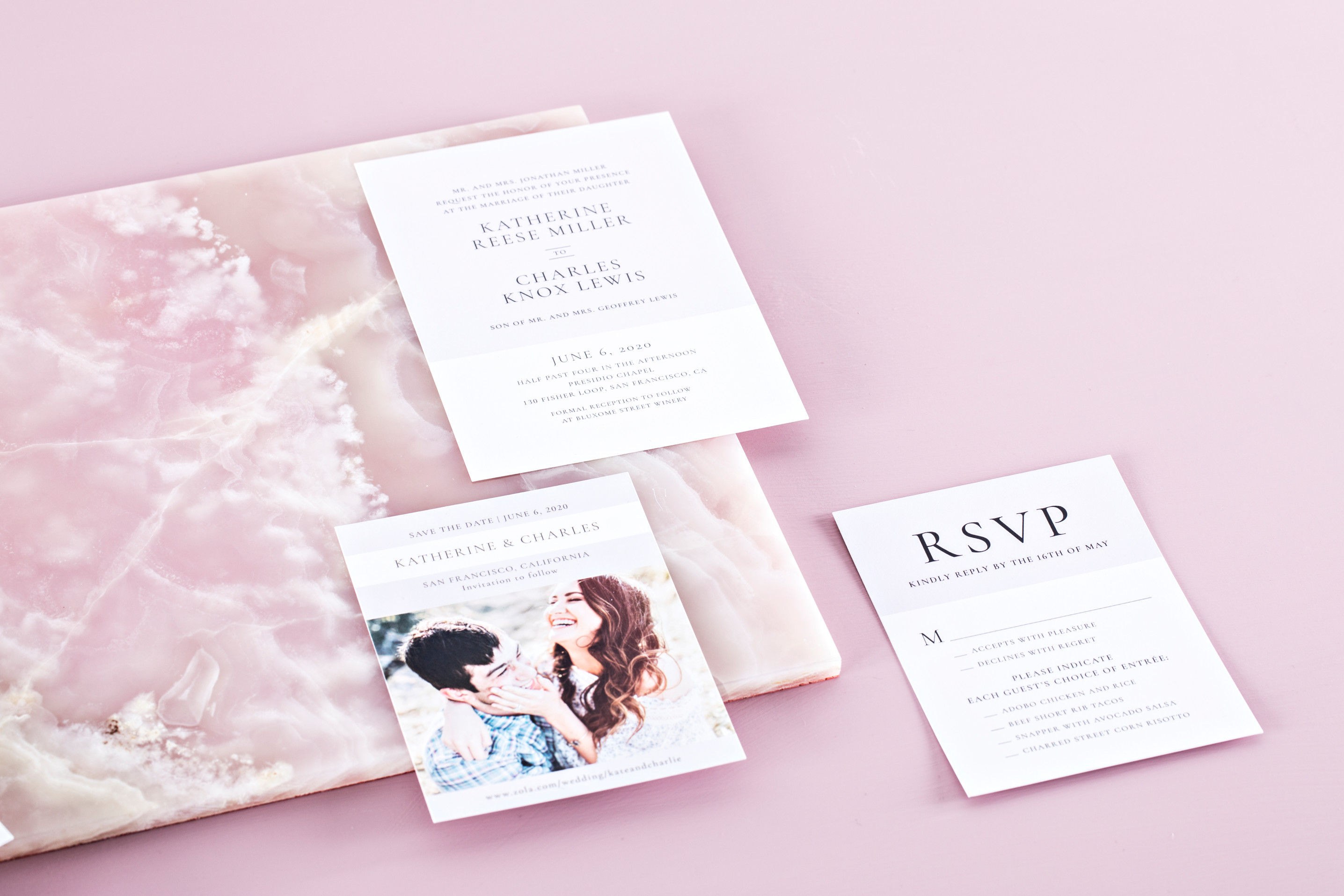
Your wedding isn’t like any other celebration; it’s not an open-door policy, so it’s extremely important to know the amount of people who will show up. The number determines how much food your caterers will buy, how much wine your bartenders will bring, how many seats you have at the ceremony, and a slew of other decisions. This is why the wedding RSVP is so crucial. But, ensuring that your guests respond, and do so in a timely manner, isn’t as easy as it sounds.
Here, we outline the way and manner in which you should request RSVPs. Trust us, if you do so correctly, you’ll save yourself a lot of time and energy in the days leading up to your ceremony when you’re finalizing your seating chart and confirming your final guest count.
How to Request Wedding RSVPs
There are two major ways to request a wedding RSVP: by mail and online. Let’s discuss the pros and cons of each method and why you may want to employ them both.
Wedding RSVP Cards
The most traditional and common way to secure RSVPs for your wedding is with a response card. The response card (or RSVP card) is typically a small square or rectangular card that is sent along with your invitation. The RSVP card will include all the information that you need from your guests, such as whether or not they can make it, how many in their party will attend, and their meal preferences.
When it comes to the design of your RSVP card, it should match your wedding invitation. Most invitations come with a matching suite, which includes a details card, RSVP card, and coordinating envelopes. A pre-addressed envelope is essential to an RSVP card so that each wedding guest can mail it back to you with their RSVP.
Wedding Website RSVP
The other way to collect RSVPs is via your wedding website. If you choose this option, you will need to direct your guests to the proper URL with your invitation. This is typically done with a “details” card included with your invitation. The details card will also typically include any reference material for accommodations and gift registries.
If all of this information is laid out on your website, including links to hotels, activities, and registries, you’ll want to direct your guests to your wedding website anyway, so you may as well ask them to RSVP there while they’re at it.
Tip: Make it very clear on your wedding website where guests can RSVP.
Which Method Should We Use?
There are pros and cons to both methods of requesting RSVPs. RSVP cards are more formal and follow the traditional manner of doing things, so it’s likely that most of your guests will know exactly how to respond. However, RSVP cards do come at an additional cost to you.
Not only will you pay for the additional paper material and envelope, but also for the return postage, which adds up when you’re sending 100+ already-heavy invitations. If you’re trying to save a little money, you may want to opt for the virtual route.
If you do go the virtual route, you may have to remind guests to actually log on to your wedding website and RSVP. When guests first open your invitation, they likely aren’t on their computer at the same time. If guests have to go to their computer and manually type in a URL, RSVPing could slip their mind. You’ll also want to ensure that gram and gramps—and any guests of the older generation—know how to use the interwebs, or be prepared to call them up to retrieve their RSVPs.
You can also utilize both RSVP cards and your wedding website to collect RSVPs. Offering your guests both options allows you to cater to both the traditional and tech-savvy crowds. Plus, having both options increases the chances of receiving more RSVPs quicker.
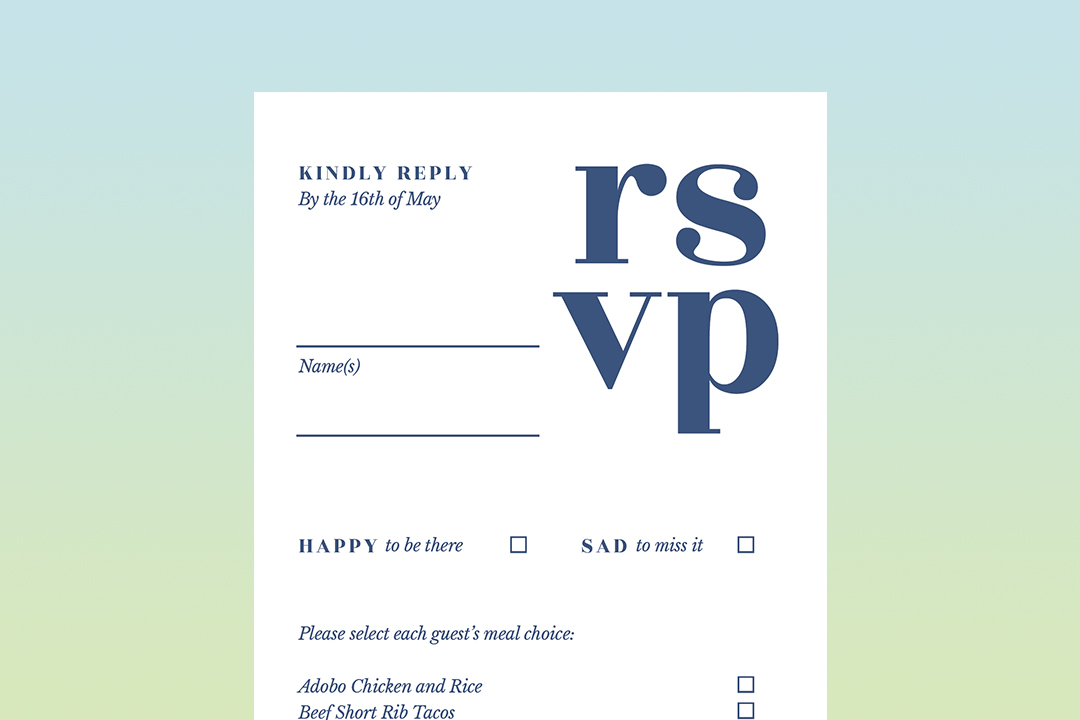
Wedding RSVP Wording
Don’t let the need for an RSVP get lost in translation. Use the right invitation wording to ensure that the request is crystal clear. Here’s what you need to include:
Clear Ask: Believe it or not, your guests may actually not know that they have to RSVP unless you ask them. Title your RSVP card with something such as:
- “Kindly Reply”
- “Please Respond”
- “Your response is requested before...”
- “Will we be seeing you?”
- “Can you make it?”
RSVP by Date: After the clear ask, comes the clear date. Make it big and bold, or at least clearly legible so that your guests know that there’s a deadline.
Guest Names: Because RSVP cards are printed in bulk, not personalized for each guest, you will need to leave a space for guests to write in their name(s). This is typically indicated on the response card by a capital M—for Miss, Mr., Mrs., etc.—and a blank space following the M. If your wedding is more casual, feel free to skip the sometimes-confusing “M” for a more straightforward “Name(s):”.
Tip: Be sure to leave ample room for guests to fill in the names of everyone in their party that will be attending.
YES or No: Don’t forget this all-important aspect of the RSVP card. Include a space, this can be a blank or a checkbox, in line with an acceptance message and a decline message. For example:
- “Will Attend” and “Will Not Attend”
- “Happily Accepts” and “Regretfully Declines”
- “Will be there!” and “Will be there in spirit”
Feel free to get creative or even funny with your messaging to further personalize your invitations.
Meal Choice: If you’re serving a plated dinner at your reception, you should include a place for guests to make their meal selection in your invitation suite. The options don’t need to dictate the menu item in detail, but instead can simply say Beef, Fish, or Veggie, for example. You may also want to include a line for dietary restrictions or allergies in order to properly accommodate guests.
Wedding Website: Include a URL for your wedding website if you’ve shared important information there, and let guests know that they can RSVP online, too.
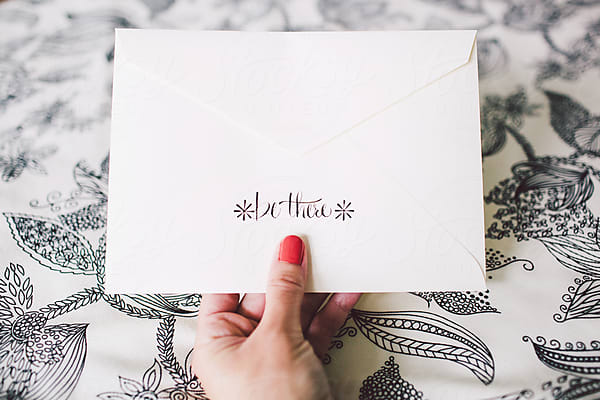
Wedding RSVP Etiquette
There are a few “rules” or guidelines to requesting RSVPs that you should follow if you want to make it easier on both you and your guests.
1. Give Your Guests Time to RSVP
Three to four weeks is plenty of time to give your guests to RSVP to your wedding. Typically, you should send invites out six to eight weeks before your wedding date, so this gives you three to four weeks after the RSVP date to reach out to any stragglers (yes, there will be people who don’t abide by the RSVP date), invite anyone you still want to from your B or C list, to form your seating chart, and to finalize numbers with your venue and caterer.
Keep in mind that if you’re having a destination wedding, it’s proper etiquette to give guests more notice by sending invitations out earlier (three to four months out) and give them more time to RSVP (around two months) so that they can make necessary travel arrangements.
2. Pre-Address and Stamp RSVP Cards
If you’re using mail-in RSVP cards, make the process of mailing in the RSVP as easy as possible for your guests. Pre-stamp all the RSVP-card envelopes (remember to factor this cost into your stationery budget) and address them with your return address or that of your wedding planner, basically whoever is handling your RSVPs. You don’t want to risk your guests not responding because they forget to get stamps, or because the card got lost in the mail due to the misspelling of your address. Making the RSVP process as simple as possible will increase the odds that you’ll get RSVPs on time (and at all).
3. Include Numbers on Each RSVP Card
When the RSVPs start rolling in, it can be easy to forget whom you have heard from and whom you haven’t. When you’re stuffing your wedding invitations, number the back of each RSVP card with the associating number for that person on your guest list. Then, when the RSVPs come back, you’ll be able to easily notice the missing numbers, and, thus, who you’re missing RSVPs from. Plus, in the case of guests who forget to put their names (a common mishap) or have difficult-to-read handwriting, you’ll know exactly who it is.
4. Include Special Requests
Do you want your guests to have a say in the playlist, or do you want them to leave a personal note? Include a tertiary call to action (after their “Yes” or “No” and meal preference) for song requests or to say something sweet.
5. Talk About the Wedding
Whether you’re discussing the food you’ll be serving or where people are staying, talking about your wedding can casually nudge guests to respond. Of course, be sure not to discuss these things when folks who aren’t invited are around, and feel free to sweeten the ask with flattery, such as “I hope you’re able to make it” or “I can’t wait for you to see the venue”.
To ensure that you have no trouble landing a wedding RSVP from everyone on your list, remember to consider your guests and to let your personality shine through when you’re creating your wedding RSVP card or call to action.
Up next for you

21 Unique Wedding Invitation Ideas
List
We have scoured the web for the most unique wedding invitations on the stationery scene, and we’re sharing them here.
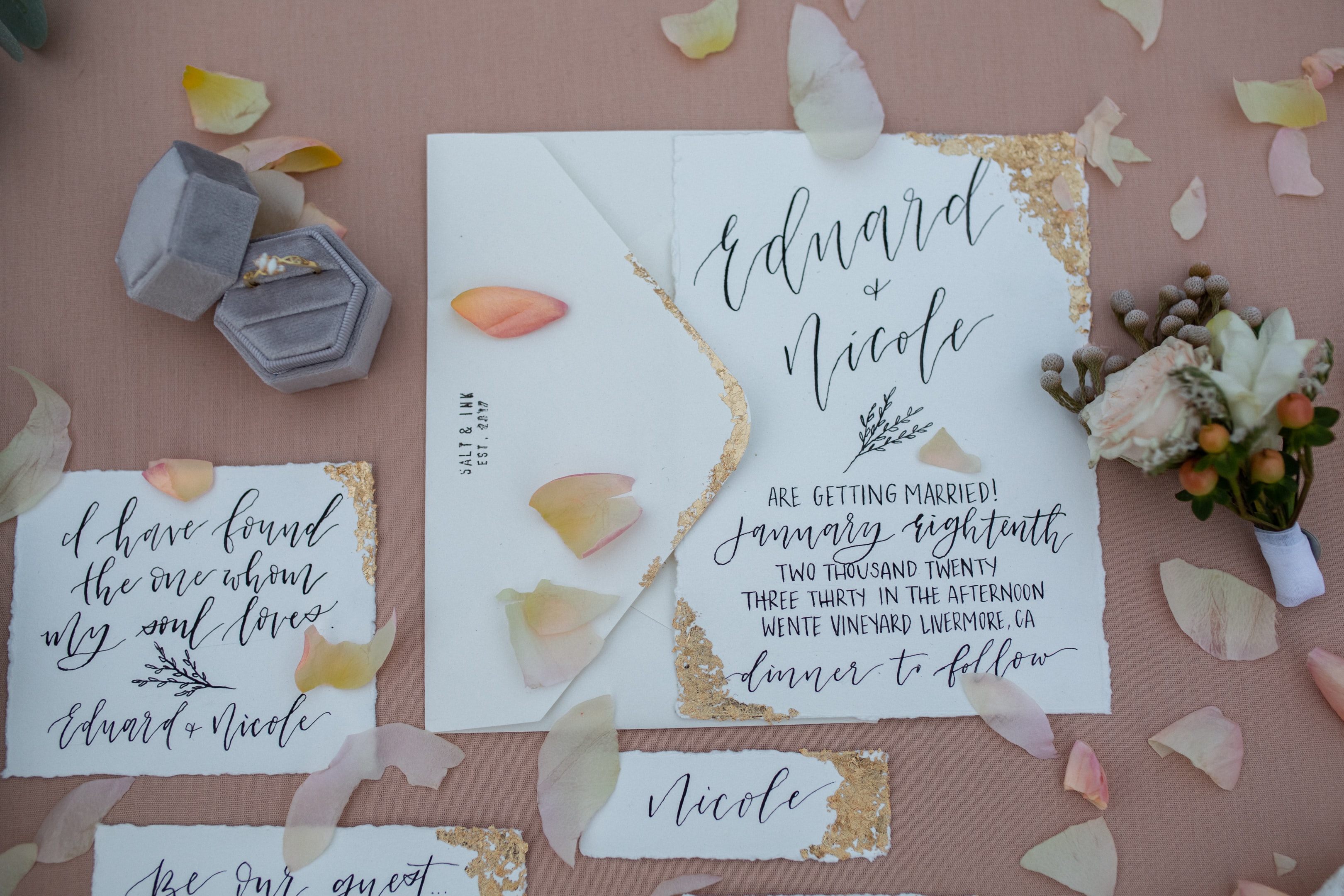
A Complete Guide to Wedding Reception Invitation Wording
Advice
What's the difference between wedding invitations and reception invitations? And when do you send one, the other, or both? Here's everything you need to know.

How to Make DIY Wedding Invitations
Advice
If you want to DIY your wedding invitations, that's great. There are just a few things you want to consider. Here are tips and tricks for DIY-ing your invites.
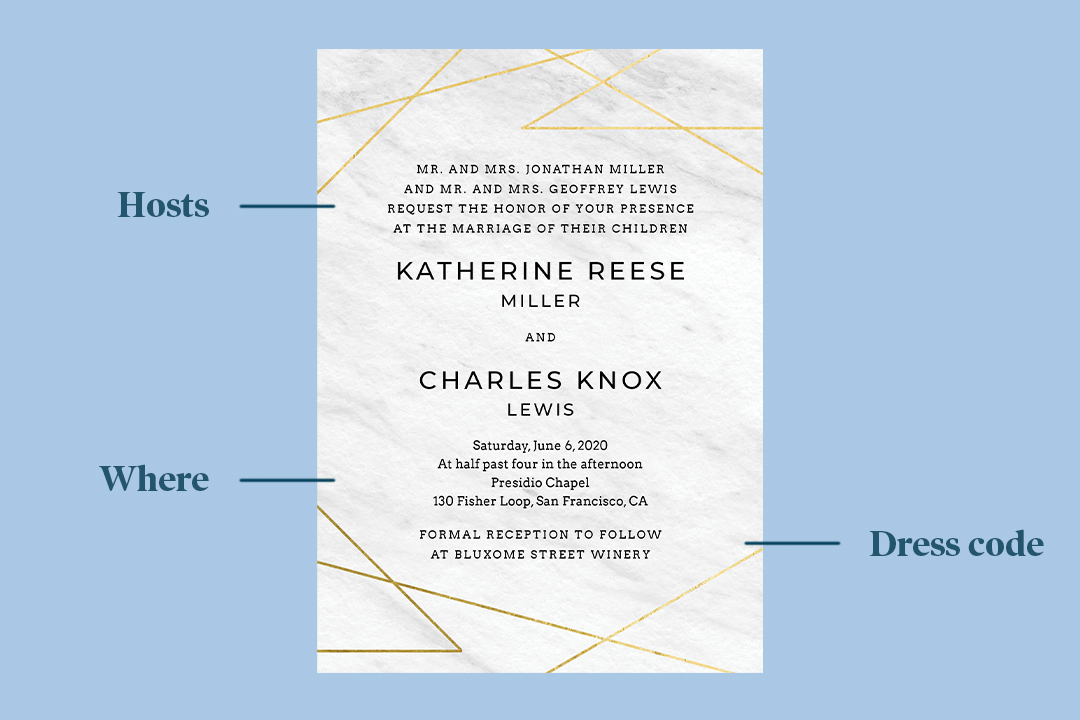
Should We Use a Wedding Invitation Template?
Advice
Wedding invitation templates are gorgeous ways to go about designing your wedding paper suite. Here's how to select and customize a wedding invitation template.
- Expert advice/
- Invites & paper/
- Invitations/
- The Best Ways to Collect Wedding RSVPs
Find even more wedding ideas, inspo, tips, and tricks
We’ve got wedding planning advice on everything from save the dates to wedding cakes.
